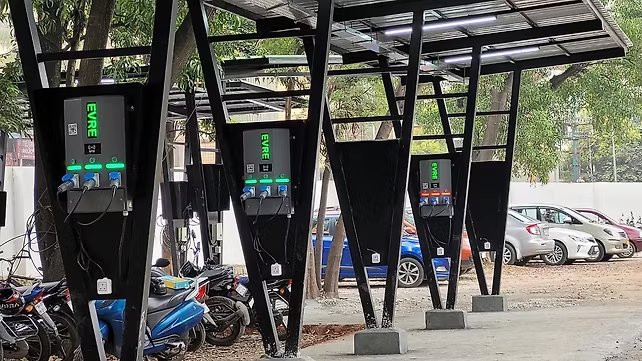As the world races towards a greener future, a staggering statistic reveals that electric vehicle (EV) sales surged by 55% in the first half of 2023, according to InsideEVs. This rapid growth in EV adoption is reshaping urban mobility, driven largely by groundbreaking innovations in EV charging. From ultra-fast chargers to smart-grid integrations, 2023 has been a landmark year for EV infrastructure. In this article, we’ll explore the latest EV charging innovations and how they are revolutionizing urban mobility. Whether you’re an EV owner or merely curious about the future of transportation, you’ll discover practical insights and future trends that could soon be coming to a city near you.
Evolution of EV Charging Technology
The Rise of Ultra-Fast Charging Stations
One of the most significant advancements in 2023 is the proliferation of ultra-fast charging stations. Brands like Tesla and Rivian are leading the charge with stations capable of delivering up to 350 kW, reducing charging times to just 15-20 minutes for a full charge. This is a game-changer for urban dwellers who value convenience and speed. According to Electrek, Volkswagen’s Electrify America network also plans to expand its ultra-fast charging network, aiming to cover 95% of highways in the United States by 2025.
- Benefits of Ultra-Fast Charging:
- Reduced Downtime: Quick charges make long-distance EV travel more practical.
- Higher Adoption Rates: As charging becomes more convenient, more consumers are likely to switch to EVs.
- Improved Urban Mobility: Faster charging reduces congestion at charging stations, facilitating smoother traffic flow.
Smart Charging and Grid Integration
Another pivotal development is the integration of EV charging systems with smart grids. This innovation allows for dynamic management of electricity supply and demand, optimizing energy distribution and reducing costs. According to MIT Technology Review, cities like Amsterdam and San Francisco are already piloting smart charging initiatives to manage peak electricity loads efficiently.
- Key Features of Smart Charging:
- Load Balancing: Helps prevent grid overloads by distributing energy use.
- Cost-Efficiency: Consumers can charge during off-peak hours when electricity is cheaper.
- Environmental Impact: Supports the integration of renewable energy sources, reducing reliance on fossil fuels.
Practical Tips for EV Owners
How to Make the Most of New Charging Technologies
With these advancements, EV owners can enjoy a more seamless charging experience. Here are some tips to maximize the benefits:
- Plan Your Routes: Use apps like PlugShare or ChargePoint to locate fast chargers along your journey.
- Schedule Charging Times: Take advantage of smart charging features to minimize costs by charging during off-peak hours.
- Stay Updated: Keep track of new charging stations opening in your area to ensure you always have access to fast and reliable charging.
Where to Buy and What to Compare
When considering an EV purchase or upgrade, it’s crucial to compare charging capabilities:
- Charging Speed: Look for EVs compatible with ultra-fast chargers.
- Battery Range: Longer range means fewer stops, essential for urban commuters.
- Compatibility: Ensure your EV supports the latest charging standards like CCS or CHAdeMO.
Global Trends in Urban Mobility
E-Mobility Hubs and Shared Infrastructure
Cities worldwide are embracing e-mobility hubs, combining EV charging with other sustainable transport options like bike-sharing and public transit. According to Bloomberg Green, cities like London and Shanghai are investing heavily in shared infrastructure to reduce carbon footprints and improve urban mobility.
- Benefits of E-Mobility Hubs:
- Convenience: Centralized locations offer a one-stop solution for urban travelers.
- Sustainability: Encourages the use of multiple green transport modes.
- Community Impact: Reduces traffic congestion and pollution in urban centers.
Future Trends to Watch
Looking ahead, the focus will likely shift towards more personalized and integrated urban transport systems. Innovations such as wireless charging and autonomous vehicle fleets promise to further transform how we navigate cities. According to Wired, the next five years could see a significant rise in these technologies, making urban mobility more efficient and eco-friendly.
Conclusion
The innovations in EV charging technology in 2023 are more than just conveniences; they represent a fundamental shift in how we approach urban mobility. From ultra-fast charging stations to smart grid integrations, these advancements are paving the way for a more sustainable and efficient transportation system. As cities and consumers continue to embrace these changes, the future of urban mobility looks increasingly green and interconnected.
What do you think about these developments? Are you ready to embrace the EV revolution? Share your thoughts in the comments below. As we move forward, the intersection of technology and sustainability will undoubtedly yield even more exciting trends, shaping the cities of tomorrow in ways we are just beginning to imagine.

